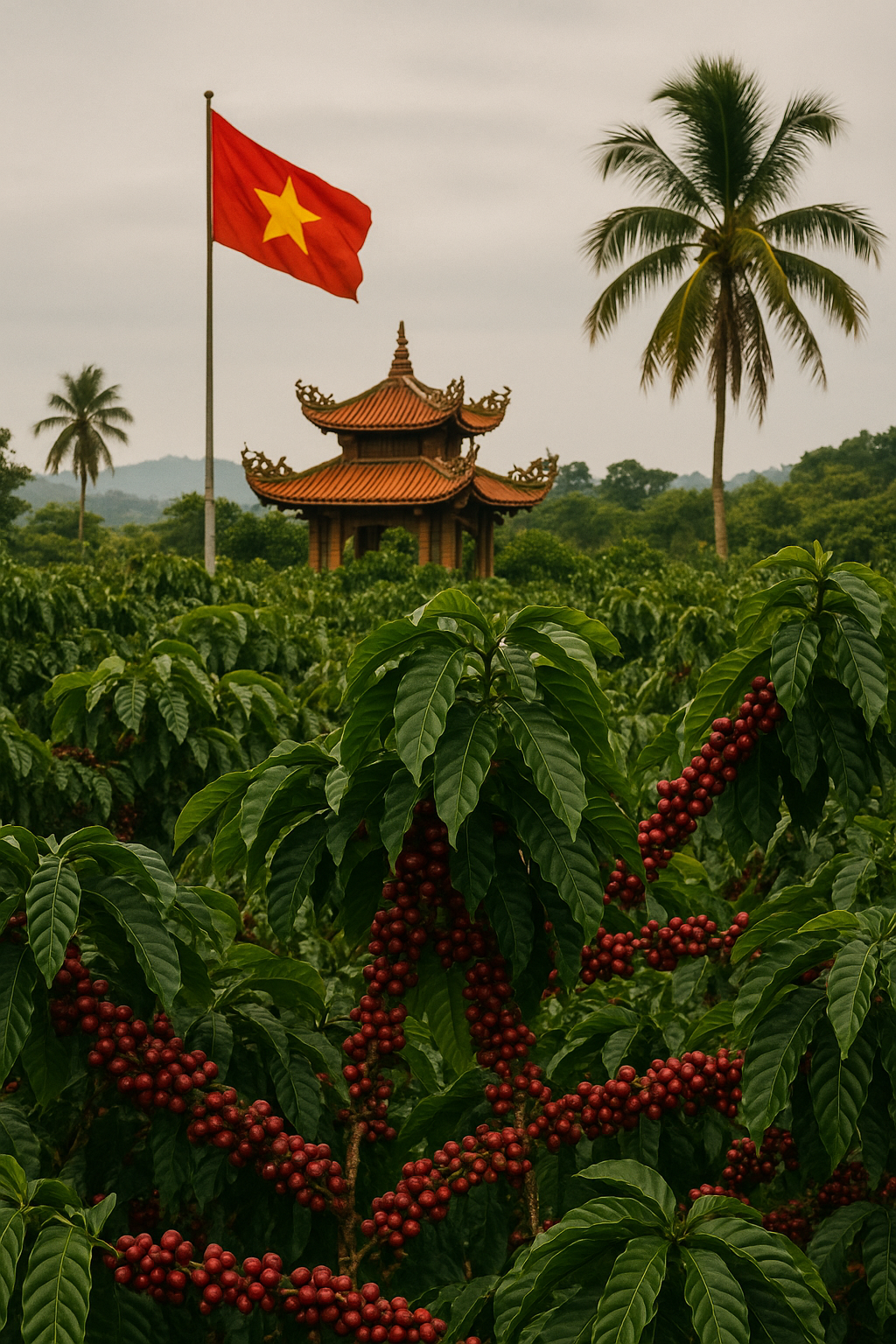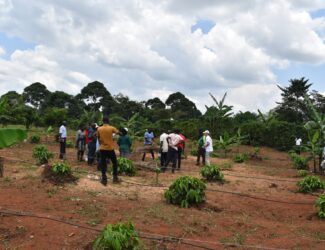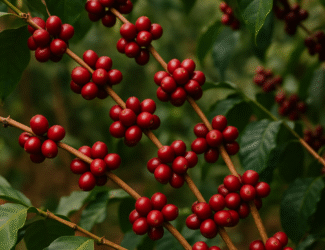
Vietnam Targets 31 Million Coffee Bags in 2025/2026 as Farmers Expand Output and Processing Surges
Vietnam forecasts a record 31 million coffee bags in 2025/2026, with robusta dominating production. Exports and domestic consumption rise, while prices and processing investment reshape the sector.
The Vietnam Coffee Annual Report 2025/2026, published by the U.S. Department of Agriculture on May 19, 2025, projects a notable recovery in Vietnam’s coffee sector, with total production expected to reach 31 million 60-kg bags of green bean equivalent. This marks a strong rebound from the previous year’s 29 million bags and reflects both improved weather and stronger farmer investment driven by record prices. Robusta continues to account for the vast majority of production, at an estimated 30 million bags, while arabica holds steady at 1 million bags.
The Central Highlands — including Dak Lak, Lam Dong, Dak Nong, Gia Lai, and Kon Tum — remain the core of Vietnam’s coffee industry, producing over 90% of the country’s output. The combination of volcanic soil, high elevation, and distinct wet-dry seasons creates optimal conditions for robusta cultivation. Despite some local media reports about farmers switching to higher-value crops like durian, official data shows the coffee area expanding, with 730,000 hectares planted in 2024, 92% of which is harvestable.
Farmer investments have been bolstered by global coffee prices that more than doubled over the past year. Domestic robusta prices reached approximately VND 125,000 per kilogram in early 2025 — a 130% increase over 2024 — while average export prices hit $5,630 per ton, up 143% year-on-year. Many producers, anticipating further gains, have been withholding stocks, which caused a 23% drop in exports during the first half of 2024/2025 despite strong global demand. Exporters have shifted toward a just-in-time model, moving away from large-scale stockpiling as capital costs rise.
Vietnam’s coffee exports are expected to rebound to 27 million bags in 2025/2026, up from an estimated 25.8 million in the current year. This includes 23.7 million bags of green coffee and 3.3 million bags of processed products, such as roasted and soluble coffee. Processed coffee continues to gain market share, rising from 8.8% of exports in 2022 to 9.6% in 2024, fueled by growing demand in Asia. Countries like the Philippines, China, and Indonesia are paying higher prices than Europe, with the Philippines paying $4,424/ton, compared to Germany’s $3,390 or Italy’s $3,260.
Soluble and roasted coffee exports are gaining momentum, supported by major factory investments. Nestlé recently invested nearly $75 million to expand its Dong Nai facility — producing for over 35 global markets — bringing its total Vietnam investment to nearly $1 billion. Local companies are also scaling up: Trung Nguyen is building a $75 million processing plant in Dak Lak, and Highlands Coffee opened a new $20 million facility with a processing capacity of 75,000 tons per year.
Domestic consumption is also growing fast. Forecasts for 2025/2026 suggest 4.9 million bags will be consumed locally, up from 4 million this year. This growth is driven by a rising middle class, recovering tourism, and a boom in café culture. Vietnam now has over 500,000 cafés, from traditional street vendors to modern coffee chains. Takeaway and home-brewed coffee are also gaining popularity among younger consumers.
Meanwhile, Vietnam is preparing for the EU Deforestation Regulation (EUDR), which takes effect in 2026. With 41% of exports destined for the EU, compliance is critical. Two Vietnamese companies have already met the requirements — including Simexco Daklak with its traceability system. The Ministry of Agriculture and Environment is building regional monitoring systems covering 136,000 hectares, developing a national coffee database to support certifications like Rainforest Alliance, 4C, and Fair Trade.
While weather conditions in early 2025 were favorable — with higher rainfall than 2024 — concerns remain about drought risks in April and May. Nonetheless, the overall forecast suggests stable and improving growing conditions. Vietnam’s top research institution, WASI, continues to supply 4–5 million coffee seedlings per year for new and replanted farms, aiming to raise productivity and climate resilience.
Despite the high prices, coffee yield improvements remain critical. Robusta yields are forecast at 2.90 metric tons per hectare, slightly up from 2.73 in 2024. Arabica yields remain modest and will require stronger investment and varietal development. The Ministry’s specialty coffee development plan aims to expand specialty coffee to 19,000 hectares by 2030, signaling future diversification in quality segments.
Vietnam’s coffee imports are projected to decline slightly to 800,000 bags in 2025/2026 due to higher domestic supply, but sustained demand for arabica beans and processing inputs will keep import levels stable.
As Vietnam enters the 2025/2026 marketing year, it does so with strong fundamentals: record prices, recovering export flows, fast-growing domestic demand, and a strategic shift toward higher-value products and traceable supply chains. However, exporters must remain agile amid price volatility and regulatory pressure, especially as Europe and Asia demand more than just beans — they want quality, transparency, and resilience.






